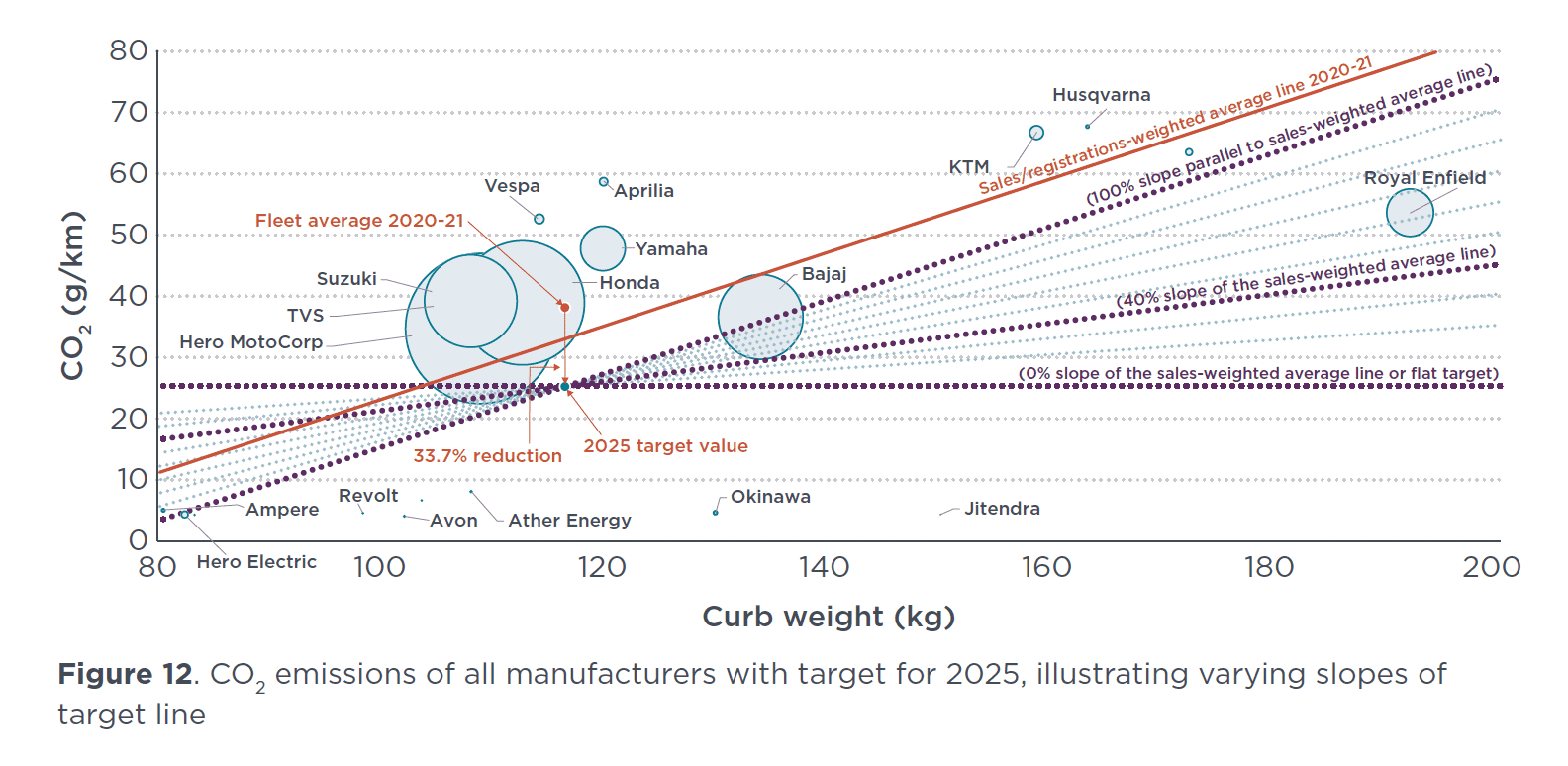New two-wheeler vehicle fleet in India for fiscal year 2017–18
Working Paper
Market analysis of the new two-wheeler fleet in India for fiscal year 2020–21
This study summarizes the characteristics of the new two-wheeler market in India using data about models sold in FY 2019–20 and FY 2020–21, and it is an update of a prior study of the new two-wheeler fleet in FY 2017–18. We analyze key two-wheeler parameters including engine displacement, engine power, curb weight, transmission, fuel type, fuel consumption, and CO2 emissions. Results show that the fleet-average CO2 emission level of two-wheelers in India was 38.2 g/km in FY 2020–21, 7% less than the fleet average in FY 2017–18. Sales of electric two-wheelers increased only marginally, from 0.1% in FY 2017–18 to 0.2% in FY 2019–20 and then to 0.3% in FY 2020–21.
Although there are currently no fuel consumption standards for two-wheelers in India, ICCT previously estimated feasible fuel consumption targets for 2025 (25.3 g CO2/km) and 2030 (20.5 gCO2/km). Additionally, while India’s current fuel consumption standards for passenger vehicles standards are based on a linear target curve based on curb weight and thus discourage reducing vehicle weight, that issue can be entirely alleviated by choosing appropriate slope reductions to all points on the sales-weighted trend line of all the vehicles currently on the market. As illustrated in the figure below, which uses curb weight as the utility parameter, a slope reduction that is 40% of the weighted average trend line would give advantage to light and reasonably fuel-efficient models. The analysis also shows that adoption of ICCT’s proposed fuel consumption targets for 2025 and 2030 would be expected to result in 33.7% (2025) and 46.3% (2030) fuel consumption reduction from the fleet average fuel consumption level of FY 2020–21.

